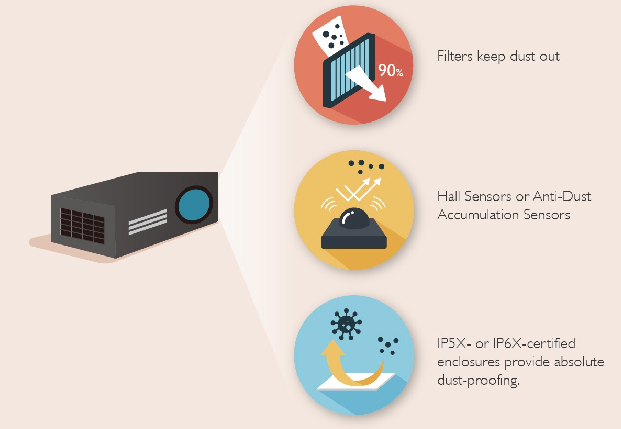Projector
Monitor
Lighting
Digital Display
Job References
This site uses cookies. By continuing to browse the site you are agreeing to our use of cookies, you can also manage preferences.
This site uses cookies. By continuing to browse the site you are agreeing to our use of cookies, you can also manage preferences.
Projector
Monitor
Lighting
Digital Display
Job References
Projector
Monitor
Lighting
Digital Display
Job References
Knowledge Center
One of the main causes of projector issues is dust. Dust accumulation wreaks havoc by reducing the projector’s ability to dissipate heat, which can cause color fading and unexpected system failure. And that’s just the beginning. When dust collects on the DLP projectors’ color wheel, the projector cannot be turned on. These problems not only cost valuable class time to fix, but also decrease students’ attention and ability to learn. It’s estimated that educators spend over 100 minutes of class time every week troubleshooting problems with equipment in the classroom, including projectors. It’s also reported at 65 percent of students are visual learners, which means without the aid of projection technology, students may not fully grasp the concept. In today’s fast-paced education environment, it’s essential that students have every opportunity in class to learn. This is why projectors should be maintained regularly, including cleaning projector filters and casings.
Because it’s impossible to thoroughly clean internal components, most projectors will eventually begin a slow decline in performance before failing completely. As an alternative, schools can protect their investment and decrease their total cost of ownership by ensuring they select the best projectors for deterring dust. BenQ’s projector family comes equipped with multiple dust-proof technologies. Dust Guard projectors feature dust filters as well as Hall sensors or anti-accumulation sensors. A Hall sensor, which utilizes magnetic signals for timing, proves invulnerable to dust accumulation compared to traditional sensors even when levels of dust deposits reach 7X higher. Even in severe environments with possible dust accumulation, the hall sensor signal can still effectively distinguish colors for precise alignment and uninterrupted projection. The company’s Dust Guard Pro projectors have IP5X or IP6X certification, which guard against the smallest dust particles using built-in filters and sealed engines in addition to Hall sensors or anti-accumulation sensors.

Thanks for your feedback!